The post Igniting the spark appeared first on The Source.
]]>One of the most exciting announcements made during IWA’s World Water Congress & Exhibition in Copenhagen last year was about plans to establish an endowment fund to support the development of young water professionals, with the fund to receive its initial financing thanks to the generosity of former IWA President Glen Daigger and his wife, Patty.
Support for young professionals is a key component of IWA’s strategy for achieving its vision of creating ‘a network of water professionals striving for a world in which water is wisely, sustainably and equitably managed’. This is demonstrated by the association’s thriving network of Young Water Professionals (YWP), a global community on the shoulders of which present and future water challenges rest. By investing in young professionals, IWA seeks to empower them within the association and, in turn, in the water sector at large.
With a long and committed relationship with IWA, Glen and Patty understand only too well how important it is for the success of the water sector for young talent to be nurtured. A renowned and highly respected member of the water profession, achieving international recognition for his expertise in wastewater treatment and water quality management for municipal and industrial systems, Glen has been a member of IWA for more than 50 years, and served as President for two terms from September 2010 to September 2014.
Glen and Patty’s generous donation of $1 million to establish the endowment fund to support IWA’s new Emerging Water Leaders Programme is set to create a lasting legacy. The endowment will be invested, and the returns spent supporting a programme that will transform the careers of YWPs.
“The thing about an endowment is that it is sustainable,” says Patty. “It is evergreen. It goes on forever.”
Explaining why he and Patty wanted to find a way to support YWPs, Glen says: “The water profession has and continues to be very good to both of us in different ways. I continue to be a water professional and have been for many decades. It’s been a core source of my being, quite frankly.
“Patty is not a water professional, but we have lived through this together and both of us understand what a rewarding profession it can be. We understand how essential water is for human life and to sustain the environment. We understand what life as a water professional can mean, both for the individual, but also for the contribution that one makes.”
Patty adds: “We are hoping that by doing this we will encourage young water professionals from around the world to step up and to become the next generation of leaders in the field and to carry the sector forward.”
Glen continues: “I joined one of the predecessors of IWA as a student in 1973. So, IWA has been part of my life throughout my entire professional career. I was senior Vice President for four years, President for four years and Immediate Past President for two years.
“It was early in that timeframe that the YWP programme was established, and Patty and I were both fortunate to be engaged with the programme, interacting with YWPs, and attending YWP international conferences. We have seen how effective that programme has been in helping to grow the current cohort of leaders and emerging leaders in the Young Water Professionals confrere.”
The Daiggers are keen to reinforce that they see their contribution as a starting point, an acorn from which great oaks will grow. Patty says: “This is the profession’s endowment. This is IWA’s endowment. We are the founding sponsors, but IWA is committing to continue to grow this endowment. From our perspective, our contribution is a start to grow something that contributes to the existing excellent YWP programme.”
By supporting talented individuals, the endowment will benefit the water sector through the contributions of professionals with diverse experience and knowledge, a breadth that will be critical to delivering the UN’s Sustainable Development Goals.
Fostering a water revolution
Collaboration, innovation and a thirst for knowledge will be critical to our water leaders of the future if we are to successfully negotiate the challenges of climate change and create a world where water and sanitation is accessible. With this in mind, IWA works hard to create an environment that nurtures talent, facilitates learning and provides opportunities for professional growth. The Emerging Water Leaders Programme will further this aim by supporting and mentoring high-achieving young water professionals, with the goal of providing the opportunity for a cohort of young water professionals to develop their leadership capabilities and build professional networks within the global water community. The programme will help YWPs realise their potential and make a fuller contribution on vital water issues. Participants will benefit from a solid grounding in leadership and management skills, which promises to help fast-track their professional development.
By targeting emerging water leaders who have demonstrated ambition, energy and leadership skills as members of the IWA, the programme will empower beneficiaries to innovate and develop solutions to the water challenges they have experienced through the early part of their career. This will accelerate innovation and facilitate work in parts of the world where there are opportunities to use transformative technologies to the greatest impact.
Patty says: “We would like to see a continuous flow of new leadership into the profession, so that the water profession continues to be vibrant and a great home for people contributing to human life and society, as it will need to into the future. This is not going to be the only thing that does that, but this is a contribution from us to that outcome.”
A legacy with longevity
The Emerging Water Leaders Endowment Fund is devised to ensure talented young professionals benefit from an environment established to enable them to flourish, be empowered to help shape the IWA of tomorrow, and become exemplars of the next generation of water leaders. This legacy will have the power to not only transform the careers of participants in the Emerging Water Leaders Programme, but, even more importantly, also revolutionise the water sector, enabling it to be more agile in its ability to respond to the global water crisis.
Just the beginning
While $1 million is an incredible gift, the Daiggers and IWA are conscious that, if the Emerging Water Leaders Programme is to achieve its full potential, the financial pool must be increased.
Glen says: “The problem is that more resources are needed to help develop our emerging water leaders. What we have donated is not enough.”
The aim, therefore, is to grow the fund and IWA will put in place structures to secure this growth, opening the way for further contributions. “We will be asking people to give what they can,” adds Glen.
He continues: “There is a saying, ‘If you want to go fast, go alone. If you want to go far, go together.’ This is an opportunity to make an investment in this sustaining, forever solution to ramp up the YWP programme in a significant way.
“The one thing I know about water professionals is that, when called, they will answer.” •
The post Igniting the spark appeared first on The Source.
]]>The post Interview: John Beaumont, Chief Digital Officer at Thames Water appeared first on The Source.
]]>Well, to distinguish what I do from the role of a Chief Information Officer, which supports all the basics of IT for a business, there are perhaps four things which have given rise to a new era in technology that together explain the role I currently occupy. One is the reduction in cost of compute, and the movement of that compute from the computer to the cloud. Second is the ubiquity of bandwidth. Third is the growth in low-cost sensors and devices that can collect data from pretty much anywhere. Fourth is a range of technology-led use cases that feed off the first three–AI, automation, drones, augmented reality, robotics. Every industry is seeing a type of disruption they haven’t experienced in the last 50 to 60 years since the early days of the information revolution. This means you need a very different business response to compete. Most companies in competitive markets now face challengers in the form of start-ups, and so find they must respond in like manner. A Chief Digital Officer thinks about the various elements I’ve mentioned in terms of both processes and customer outcomes, and the reality is that at some point in time, the role of CIO and CDO will fuse in any truly integrated business. Our CEO Steve Robertson has a strong tech background–having set up BT Openreach–and our focus is very much on the digitalisation of our business and getting information on our customers to generate insight and action.
Start-ups often struggle to scale up to the point where they are self-sufficient or can be bought by larger firms. How can start-ups get in front of potential buyers and investors more easily and effectively?
I don’t see Thames Water buying start-ups, but I can see us partnering with small companies that are offering a product we could apply to our business. Personally, I like working with smaller technology companies because they’re more agile and you can shape what they develop and have them work well with you. The community of investors with angel capital that these start-ups need to tap into is very well funded and extraordinarily brutal. Getting funding is tremendously difficult, track-records are extremely important, and who actually makes these decisions can often be opaque. If you haven’t got the right network, it’s very difficult to succeed. The right board of directors need to be connected to the right group of angel investors, who need to be connected to right investors, all of which gives start-ups the right exposure they need. It’s really all about tapping into that community to make sure you’re funded and can showcase products to companies and further investors.
Is Thames Water planning to partner with any start-ups soon?
In our supply chain, we have a couple of smaller software companies that are developing for us. We’re also working with a small data analytics start-up called Explore AI. Those businesses are quite easy to find however, because they scale with demand. When it comes to hardware or tech related start-ups, it’s much harder, and you need to have the funding to develop products. We’re not working with anyone that is super small and in the field of leading-edge technology, but rather those that have the balance sheet to invest in sensors and technologies that will help us get better insight about our networks. For example, Microsoft and IBM have innovation funds that they are willing to use to invest in problem-solving issues with us. One thing we’re working on is a low-cost sensor to measure headroom in a sewer. Depending on the geometry of a sewer, there has been a minimum headroom space to avoid a flood. If we can measure this, we can know where there might be a blockage, which might lead to a flood or pollution. Some networks will be 20 feet deep, others two feet deep, but whichever you’re working with, if you can detect a problem digitally, you can deal with that problem much quicker. Some of those sensors cost around £1000 each, because no-one has yet scaled them. If you can get that down to £10, then the economics for deploying them nationwide change dramatically. Large firms are instrumental in scaling such products, so we work with them on these projects for long-term supply. I don’t think that its right for us to fund start-ups with our customer’s money, but I do think there needs to be wider, industry-led response.
Thames Water is investing £11.7 billion in new infrastructure in its next five-year business plan. How does your digital strategy come into the various tranches of that investment?
Well, we have 15 million customers, 150,000 kilometres of water, waste and collection piping, and 500-orso factories treating either water or waste. We have a whole heap of customer-type solutions, and a maximum network which needs monitoring, and factories producing stuff meanwhile. There aren’t many businesses in the UK with that sort of spectrum of assets, if I can use that in the broader sense of the word. The regulator in the UK has decided to split wholesale retail for most infrastructure businesses, except for water, so we don’t have that same firm boundary. If you think of some of the more painful problems our customers experience, they not only impact on the customer but on our networks and production as well. Getting real-time data on what happens between customer and supply is therefore critical. We had a pipe burst on Goldhawk Road in London in February this year. Water everywhere. It took us between 10 and 12 hours to identify and shut the main. However, this was a water network that like many has been built over hundreds of years and is interconnected. Out of hundreds of thousands of valves, of which you’re not sure those that will turn off the right main, you have to act on at least two at the same time. All this in midst of a flood and traffic moving through the country’s capital. With data that can pinpoint exactly which you’re looking for and that allows you to isolate the right valves, you’ll get a better customer outcome very quickly. So, we need to stitch together the data about our customers, network and production. We also want to connect our data to our website, so that our customers can see where there are traffic works to re-plan their route.
Early on this year, the United Kingdom recorded multiple incidents of burst pipes after temperatures rose following a prolonged freeze. The national water regulator Ofwat published a report naming several firms that weren’t adequately prepared to respond. How did these events motivate you as Chief Digital Officer, given your relatively new start at the company?
Well, we certainly weren’t walking blind before those incidents. We had a lot of data, but we weren’t always tapping into it. If you think about servers and production facilities, there are a lot of operational technologies measuring reservoir levels and so on. There is a system of control on those levels which triggers an alarm when those levels are exceeded. That is a system that continually uses data to predict an issue, but to do the same for piping networks puts a much bigger strain on the system’s computing power. The question we now have is how we should exploit our existing data to give the operational teams more insight and allow them to respond better. Since the big freeze thaw, we’ve been trying to build visualisations of real-time data flows in a pragmatic way for the operational folks. I think doing that will have, as it has already throughout the summer, a dramatic impact. Personally, I think this has crystallised for me the importance of the work we do with data.
The UK’s Environment Agency has warned that climate change, population growth and land use are exerting stress on England’s water supply and could result in shortages by 2050. Meanwhile, Thames Water plans to build a storage reservoir connecting Oxfordshire to the Thames that could take some 15 years to build. What is your understanding of a water scarcity threat to the UK and how should data be used to mitigate it over the coming decade?
The reservoir issue isn’t one I’m heavily involved in, but if customers use less water, or if we fix more leaks, then we have more supply. There is a range of technological responses to that issue also. By the end of this asset management period, we will have around 300,000 smart meters installed, 700,000 in the next, and 1.5 million in the one after. The intent is to be as fully metered as we possibly can be by 2035. All our customers will know the extent of their consumption, and we can help them reduce it further through awareness and smart tariffs. Typically, when a customer is metered, the reduction in the use of water is somewhere between 12 to 20 percent. One customer’s smart meter was inexplicably ticking all the time. Turned out it is was leak, something like £10,000 worth of water lost. We were able, as part of our customer-side leakage service, to identify that leakage and fix it for free. Around a quarter of the total leakage is on customer pipe work, not Thames Water pipe work, and being able to identify which is ours and which is customer side is important. In any case, we need to get much smarter about where these leaks are, so we can fix them much quicker.
Do you agree that anything that can be digitalised can be hacked, and that Thames Water’s drive to digitalise its operations as the country’s biggest water supplier is a rather daunting prospect?
There is no question that as our business becomes increasingly digitalised security of our systems and data is of paramount importance, especially given the criticality of our services in people’s lives.
In my new structure we appointed a Chief Information Security Officer who is looking at the security of all our IT and OT systems.
As a general point we will make sure we employ best practices using a pragmatic risk-based approach. On the IT side we are investing a lot of money to ensure our network, data centre, applications and end user devices are up to date and secure. This is the primary method of defence. Behind this we have a series of processes and protocols to reduce risk and to respond appropriately to a major global incident. On the OT (connected asset) side the risk is different as we have a number of distributed yet integrated technology systems and sensors across our network.
In this domain we need to ensure that we design the system in a compartmentalised manner so that any incident is isolated and can be contained. If we do this then the impact of any hacking will be less severe. For example, if you take a sewer monitor, the worst that can happen is that it spits our errant data. The response is to send an engineer to investigate who will see that the sensor is misbehaving, and we know not to rely on it. Ultimately in a worst-case scenario we would have to manually control all our key infrastructure, which is part of our incident response process anyway. I don’t doubt we will continue to remain a target for hacking and we will continue to invest in a set of capabilities to appropriately respond.
Interview by Jack Aldane
The post Interview: John Beaumont, Chief Digital Officer at Thames Water appeared first on The Source.
]]>The post Interview: Julia Braune, General Manager of the German Water Partnership appeared first on The Source.
]]>Above all, I believe in strengthening the existing member network by improving the visibility of German Water Partnership in Germany and abroad and engaging new members to join the GWP-network. The launching of our new Website in mid-2018 is a first step in that direction with many more to come. Furthermore, we will strengthen existing cooperations and partnerships with ministries and partner organizations.
In many developing countries, particularly those within Africa, there is a disconnect between a lack of advancement in infrastructure and an advancement in smart technology, between which an opportunity presents itself for digital infrastructure to leapfrog developed nations. How is GWP working to realise the potential in this space?
GWP has been actively driving the agenda on digitalization in the water sector through our Working Group WATER 4.0 – our members have been actively embracing the opportunities arising from digitalization by developing concepts custom made for developing countries based on smart technology. With joint booths on the international water exhibitions and our own conference brand GWP-Day we actively showcase the German know-how and
expertise in WATER 4.0 worldwide and continue to provide a platform for establishing new digital solutions.
What are you doing as general manager to encourage more young professionals to enter the water sector?
As the network representing the internationally active German water sector we closely work together with Germany’s technical universities, research and training institutes. We are also participating in international programs such as the ASApreneurs-program and thus offer young students the chance to work on water related projects abroad. This year the GWPconferences in Sambia and Colombia will be supported by two such young professionals. These conferences aim at showcasing solutions for water related challenges and bring experts from Germany together with their counterparts abroad.
What signifcance do you place on the influence of global cities as places facing enormous demand for sophisticated and sustainable water supply over the coming thirty years?
I see an extremely high significance with a rapidly growing need for circular concepts and re-use solutions, which can be provided by the extensive German know-how in environmental technology. The focus on cities guided by the SDG-Agenda and embracing the opportunities of digitalization will be a core component of the next Blue Planet – Berlin Water Dialogues on 22nd October 2018 that is being coorganzied by GWP.
China is Germany’s biggest private sector competitor in water. How do you think German water companies ought to manage price competition with China?
The German water sector has to concentrate on its core competences: cutting edge research and development paired with excellent engineering. GWP aims to further foster an international understanding that truly sustainable and high quality technologies with a long life-cycle and exceptional efficiency have their price. But German quality goes beyond manufacturing as it involves proper maintenance and service, which can only be provided by excellent schooling and TVET. Germany’s excellence in engineering paired with its excellence in schooling will – proven by sustainable and more efficient solutions – enable German companies to manage future competition.
Are there aspects to the GWP’s relationship with the five German ministries it works with that you wish to see improved and how do you intend to achieve this?
Firstly I can proudly state that the relationship with our five German partner ministries has been very positive, with close communication and cooperation on a multitude of levels. Our common goals have seen a renewed push with the specific focus on Africa and water related issues framed in the coalition agreement of the new German government in spring 2018. Thus, GWP has offered to play a more active role in cooperation on development issues with the Federal Ministry for Economic Development (BMZ). Beyond this newly defined focus GWP will continue to closely work together with all its Federal Partner Ministries regarding their initiatives on export of German expertise and environmental technology in the water sector. Especially the close cooperation with the Federal Ministry for the Environment (BMU) will be continued to support the fulfillment of Germany’s international commitments made with regard to sustainable water management and
environmental protection.
What do you believe the future will hold for the German Water Partnership?
The future holds great opportunities for the German water sector and beyond. Germany has shown for more than a hundred years how water management can be accomplished by fulfilling highest standards. Besides wasteful use of water and inefficient water management, climate change further increases the negative effects on available water resources. Thus, the global community is increasingly aware of the necessary changes needed to sustainably manage dwindling resources. German technology provides truly sustainable solutions to integrated water resource management which can only be achieved
by technological approaches with a long life cycle and the necessary sophistication to tackle both rural as well as complicated mega-city water challenges of today and a demanding future. One key with regard to finding successful solutions for the future certainly is an eye-to-eye level cooperation between partners in Germany and abroad to also adapt concepts to thelocal needs of each country.
The post Interview: Julia Braune, General Manager of the German Water Partnership appeared first on The Source.
]]>The post Interview with Sergio Campos, Water and Sanitation Division Chief, IDB appeared first on The Source.
]]>“The IDB has the ability to help governments to work across sectors like energy, agriculture and water,” said Campos. “When we are asked to provide assistance in different projects we look from different angles and we help the countries to avoid working in silos and in a more multisectoral way.“

What are the regional trends for infrastructure development? Is it mega projects, or more decentralised solutions?
We have four main regional lines of work going on right now: access to water and sewage, wastewater treatment, rural water, and integrated water resource management. In terms of water and sanitation the challenge is to transition to smart water infrastructure like automatic metering and full automatisation and control of our systems through smart infrastructure.
Our region has made significant progress in terms of achieving access to safe water but if we apply the SDG criteria we’ll see that there are over 200 million people with non continuous service, not all water is potable. In terms of sanitation the main challenge is providing sanitation in peri urban areas and here, especially in the case of public utilities.
Not everything needs to be a conventional solution if we want to solve the issue of fecal sludge management. In the short term, options like condominial sewerage are among those our region needs to explore and consider. We have an initiative for optimal sanitation in which we try to implement different types of solution in order to address the needs of the population with secure and safe standards.
As for wastewater treatment, the key issue–especially for the areas with very little water–is reusing water, and for this we are promoting the adoption of circular economy models in the water and sanitation sector. In the case of integrated water resource management the key issue is the adoption of better technologies to conduct bette planning of the usage and allocation of our water resources. Technology is very important: we have an simulation modelling tool called HydroBID that has already mapped over 260 thousand water basins and their water availability. Why is this relevant? Because in Latin America 80 percent of the electricity comes from hydropower, 80 percent of our agriculture is rainfed, so we are highly dependent on our water resources and better planning will always yield better results.
How is IDB investing in watersheds and basins and how do you find the balance between biodiversity and economic development?
Our region is privileged in terms of water availability, we have one third of the global water resources and only eight percent of the world’s population. Hence, we have a tremendous potential to make gains from those water resources. We always try to strengthen the different aspects of watershed management, that is one of the biggest challenges that our region has. In addition, we need to emphasise good governance and institutionality, the legal framework and coordination among different stakeholders. A good example is the Latin America Water Funds Alliance, a public private partnership. It is a financing mechanism where we gather all sectors that have a heavy water footprint and that are interested in preserving our ecosystems. Here business meets science to come up with better practices to ensure that our watersheds are functioning well, this include watershed protection and conservation, changing patterns of agricultural production, reforestation. This has been a very successful initiative. We have been able to strengthen 22 funds in the region, benefitiating around 60 million people and leveraging more than US$120 million.
What are three success stories of the IDB in the water and sanitation sector?
We have many, but if we had to name the top three I would name the support we provided to SABESP (Company of Basic Sanitation of Sao Paulo) for the cleaning of the Tiete river, where we have invested more than one billion US dollars in over fifteen years. We have worked for over 35 years with the Public Enterprises of Medellín (EPM) (Colombia) in the cleaning of the Aburra river; we started with a master plan so all of the investments have been done in a very orderly way for water and sewage and then on to wastewater treatment, the latest phase that they are undergoing right now and that will allow them to treat nearly 99 percent of all of their wastewater. Another great project is the sanitation of the Montevideo Bay, in Uruguay where we have been working for almost 20 years with a master plan that determined a number of sequential investments that have resulted in a very successful outcome. Residents of Montevideo can now swim in its waters and enjoy the bay as an integral part of their environment.
Where can IDB enhance water security in ways that it could be difficult for the private sector or other development banks working in Latin America and the Caribbean to do so?
The IDB has the ability to help governments to work across sectors like energy, agriculture and water. When we are asked to provide assistance in different projects we look from different angles and we help the countries to avoid working in silos and in a more multisectorial way. The other area we emphasise is to leapfrog into technology. I have already mentioned HydroBID, a tool that allows us to do strategic planning through the use of rainfall data and calculations and digital maps of hundreds of thousands of water basins in the region. The main goal is to have a more holistic and comprehensive approach for water and sanitation in our region.
How is the IDB using the SDG framework for its water and sanitation portfolio?
There is international consensus that if we don’t comply with SDG 6 probably none of the other SDGs will be met. A great example of tools and initiatives that contribute to the 2030 Agenda is AquaRating, that the IDB has developed together with the International Water Association (IWA). AquaRating makes a significant contribution to improving utility performance and a roadmap to anticipate future challenges. The rating system allows for better planning and decision making processes for the utilities’ management to achieve sustainable and efficient outcomes. AquaRating is an international standard that enables water and sanitation operators to focus on the quality of the service they are providing.
As a standard, AquaRating sets the baseline for utilities to monitor their performance and plan for improvements. AquaRating offers a comprehensive, impartial and credible evaluation of the utilities’ performance and best management practices, based on three dimensions: (i) performance indicators; (ii) best practices; and (iii) reliability of information. The AquaRating system gives a detailed evaluation of 112 elements across eight key areas and validates information through an independent auditing process, enhancing accountability and transparency. The evaluation system has been tested in 13 utilities in 2014 in nine countries in Europe and Latin America and is currently being implemented through individual operators in Ecuador, El Salvador, Argentina and Spain and through government and financial institutions in Peru, Colombia and Mexico, Sierra Leone and Fiji.
The post Interview with Sergio Campos, Water and Sanitation Division Chief, IDB appeared first on The Source.
]]>The post How a new prepayment system is connecting piped water to the urban poor appeared first on The Source.
]]>How does it work?
CityTaps has developed an innovative solution, CTSuite, that bridges the gap between water utilities and the urban poor: it is a prepayment service that comprises the world’s only smart (IoT) and prepaid water meter and a billing software. CTSuite allows residents to prepay for running water in the home–which is cheaper, healthier, and more convenient than any alternative–with any mobile phone, at any time, and for any amount. Prepaid water helps utilities become financially more viable, and gives them the ability to expand at-home water service to even the poorest residents and invest in infrastructure development.
How did the CityTaps project come about?
While working in Kampala, Uganda, I saw first-hand how the lack of piped-water deeply impacts the urban poor in the developing world. Nearly one billion people live without access to water in the home and face a triple tax in health (jerricans contaminate clean water), in money (up to 20 times more than the regulated tariffs), and in time (up to two hours per day). Women and girls disproportionately bear this burden. As a feminist and humanist, I have dedicated my career to trying to address this challenge through the founding of CityTaps in 2015. We have a moral imperative to solve this problem that affects the dignity, economic opportunity, and health of millions. Nobody’s yet cracked this–I believe that we have a major piece of the puzzle.
Is it still at the pilot stage or is it operational in cities?
CTSuite has been under field test since October 2016 in Niamey, Niger, with Veolia, the world’s largest water utility company. Twenty plots comprising 51 households are receiving prepaid water at home and accruing significant social benefits. Based on this success, CTSuite has gathered serious interest from private and public water utility companies throughout Africa, South America, and South Asia. We plan a 1,300 plus unit rollout in winter 2017 in Niger.
What has been the feedback from users?
We conducted surveys before, during and after our pilot in Niamey. Respondents reported that they:
- Saved money (a 94 percent saving based on median consumption of subscribers paying 16 times the utility tariff)
- Had greater control over their finances (households reported having a water budget increase from 35 percent to 68 percent over the course of the project, proving that prepayments are easier to manage),
- Experienced improved health outcomes (61 percent of respondents reported an improved perception of health), and
- Reaped savings in time otherwise spent procuring water from alternative sources or making time-consuming payments in person at the water utility (women and girls in particular reported benefits from this service as they are primarily responsible for water duties in the household).
- Overwhelming customer satisfaction was reported and 98 percent of respondents would recommend CTSuite to a neighbour. We will be expanding the service with the water utility (SEEN) as they can see the operational and financial benefits that CTSuite brings to them.

How is it financed and how is the user cost calculated?
CityTaps employs a meter-as-a-service model. Our unique customer management system supports the utility’s water monitoring and revenue collection processes. CityTaps is also responsible for collecting mobile payments from end-users via our platform. From these funds, CityTaps shares revenues with the water utility–we get paid when the utility gets paid, which is when people have water at home. As a startup, we are financed by grants, competitions, and some equity investors.
Who do you partner with?
We partner with water utilities to help them improve their cash flows and balance sheets. With CityTaps, utilities can serve all their customers more efficiently, expand coverage, and access new sources of financing for their capital projects. Our system helps utilities become financially independent and able to invest in infrastructure for at-home water service to even the poorest residents.
What is the potential for CityTaps in developing cities around the world, are there any prerequisites?
Scaling our solution requires deployment in the growing urban centre of the developing world. While in dire need of innovation, this industry can be slower than most to adopt new technology. Our main challenge is proving the value to the utilities. The only prerequisite is a utility interested in improving and expanding its service.
Can CityTaps only be achieved due to the technology available to us today, like the cloud, mobile phones and IoT?
CityTaps’ solution, CTSuite, offers the world’s only smart and prepaid water meter system that fully automates a water utility’s metering and payment processes. As such, CTSuite is dependent on technologies available to us today in order to offer a pay-as-you-go (PAYG) at-home water service using mobile money integrated with prepaid smart meters (CTMeter) and a companion software management system (CTCloud). We leverage the power of the IoT, hardware sensors, mobile phones (smartphones not required), and cloud-based software–all adapted for use in the developing world–to create the largest social impact possible. The CTSuite allows the utility to track customer behaviour and gain new insights from big data analysis and visualisation not otherwise available in customer management systems.
Where do you see CityTaps in five years’ time?
Based on the success of our pilot in Niamey, CTSuite has gathered serious interest from private and public water utility companies in sub-Saharan Africa and the developing world. We plan to deploy 2,000 to 3,000 CTSuites over the next 12 months, on our way to 100,000 in four years and 10 million in 10 years. CityTaps’ innovative solution has the potential to dramatically and quantifiably improve the lives and well-being of a billion people who do not have access to water in the home. It is our goal to work together with water utilities, impact investors, municipalities, and international financial institutions to make access to running water in every urban home a reality.
The post How a new prepayment system is connecting piped water to the urban poor appeared first on The Source.
]]>The post When is desalination the right choice? appeared first on The Source.
]]>Jonathan Andrews spoke to a select panel to break down some of the more common controversies surrounding desalination, and asks if water scarcity can make desalination plants environmentally, financially and politically feasible
When–if ever–will desalination become economically and politically competitive with other water supply options for thirsty cities?
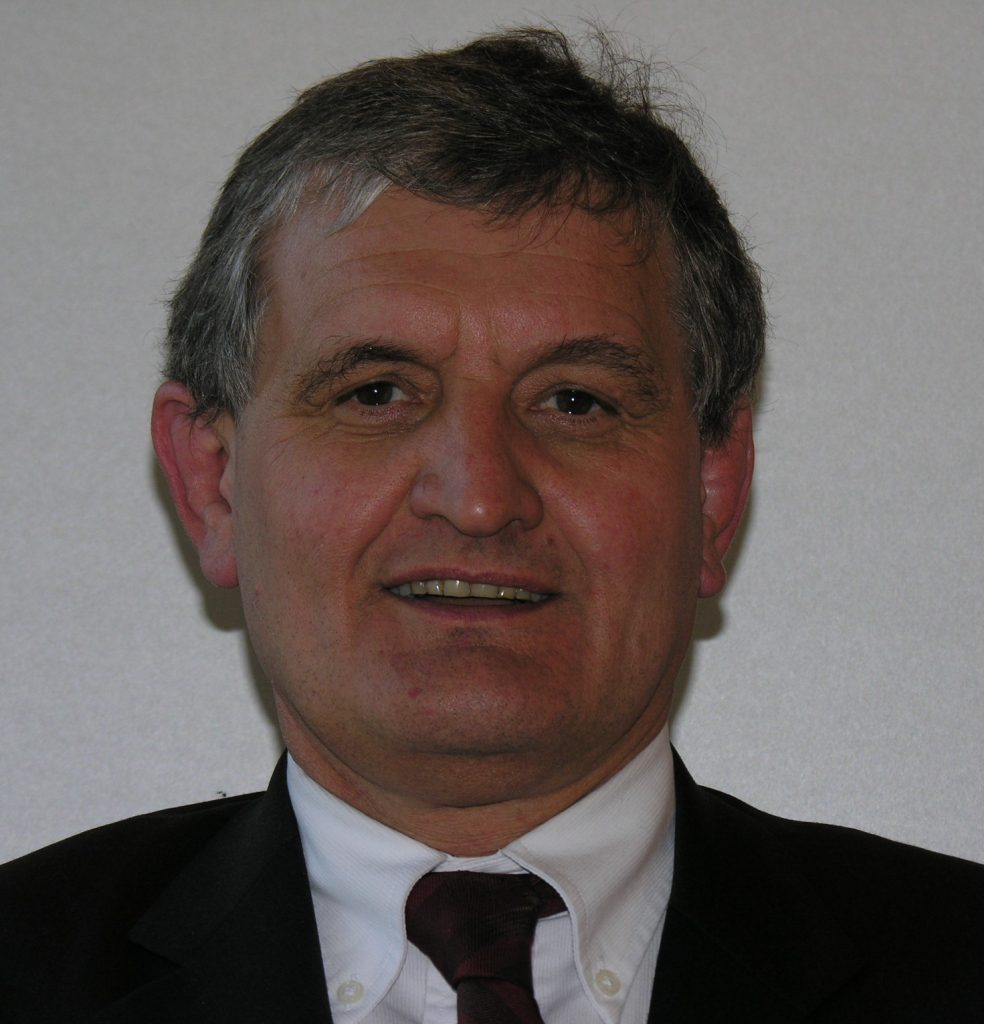 Michel Canet, Business Development Advisor, Veolia Water Technologies
Michel Canet, Business Development Advisor, Veolia Water Technologies
Take Saudi Arabia as an example where thermal multi-stage flash [MSF] plants have been installed for more than 30 years. It is clear that the only economical and political water supply option is to continue to use desalination but the authorities should take into account the availability of new technologies such as multiple- effect distillation [MED] and reverse osmosis [RO], which can be combined. A 15-year-old MSF plant can be replaced by a hybrid plant of MED and RO technology to produce more than double the quantity of water with less electricity and steam consumption.
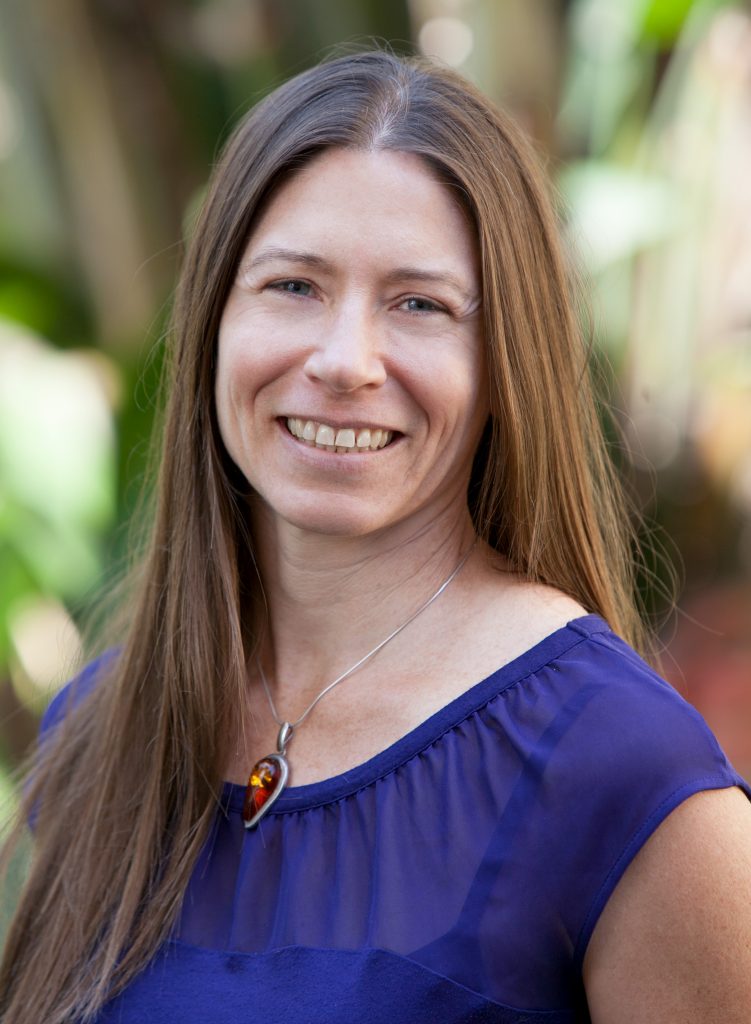 Heather Cooley, Co-Director, Water Programme, Pacific Institute
Heather Cooley, Co-Director, Water Programme, Pacific Institute
Desalination is among the most expensive options, and water managers may reduce the output of a desalination plant when demand drops or when less expensive options are available. Because of the fixed costs of the plant, reducing the output can increase the unit cost of the water produced which can further reduce demand or make other supply options even more economically attractive. In response, water managers may temporarily or permanently shut down the desalination plant. This can reduce the variable operating costs associated with the plant but ultimately leave ratepayers to pay off a plant while receiving little to no benefit from it. This would be a disservice to the community and the industry.
 Emilio Gabbrielli, Director, Overseas Business Development, Toray and President of the International Desalination Association (IDA)
Emilio Gabbrielli, Director, Overseas Business Development, Toray and President of the International Desalination Association (IDA)
It already is. If fact, when you consider both desalination per se and advanced reuse, these should be considered as complements or alternatives to mainstream water supply in most situations where water resources planning is done. The technology involved is mature and reliable, and costs are often competitive with traditional treatment processes. In many cases, they are actually already cheaper, not only safer in terms of quality. The value of desalination and advanced water reuse is being recognised more and more, and political interest and support to explore these alternatives is growing fast.
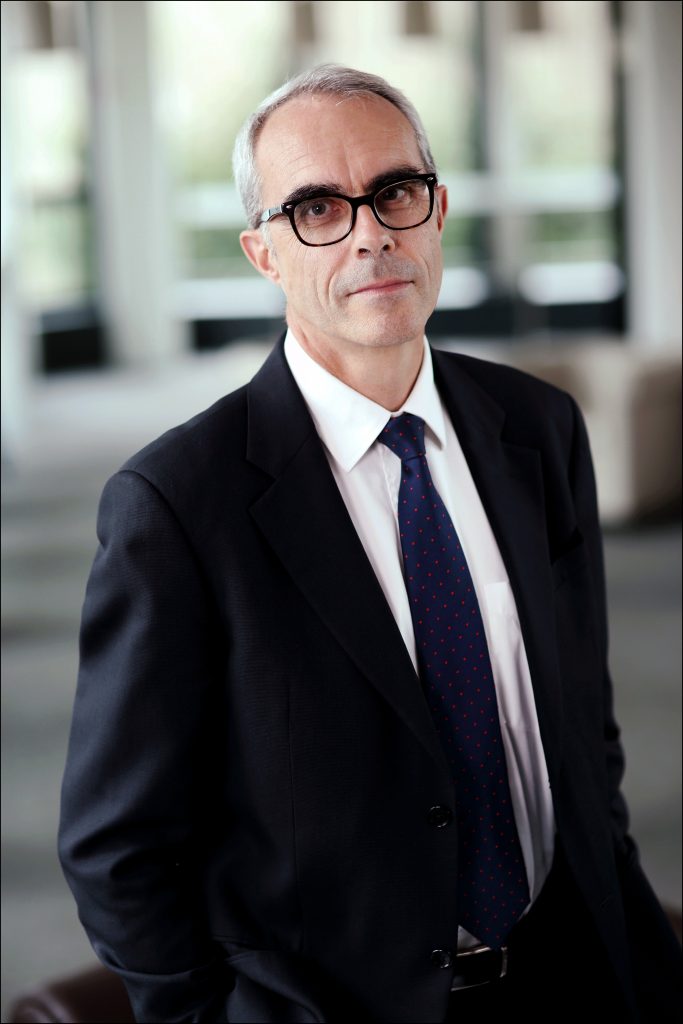 Denys Neymon, Chief Executive Officer, Treatment Infrastructure and Executive Vice-President, Suez
Denys Neymon, Chief Executive Officer, Treatment Infrastructure and Executive Vice-President, Suez
For coastal cities, desalination is a complementary solution to other water supply systems. It is the best and only solution when no other options are available, and due to its cost of under US$1 per cubic metre, it is always economically and politically competitive, especially for coastal cities in developed countries.
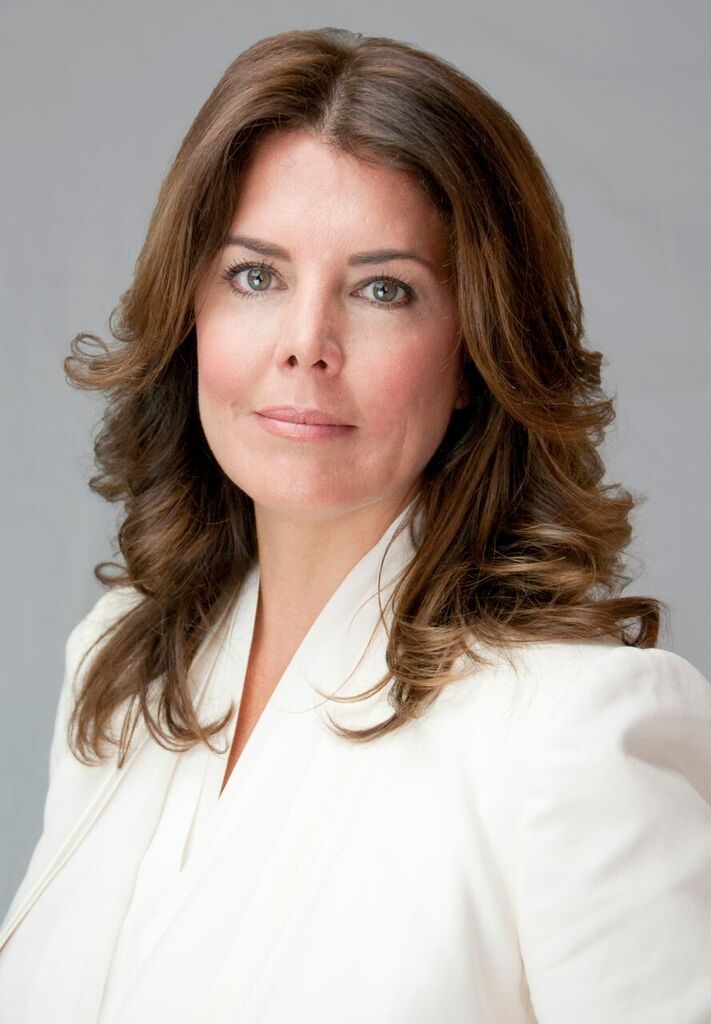 Shannon McCarthy, Co-Founder and Partner of United4Water and 1st Vice-President, International Desalination Association (IDA)
Shannon McCarthy, Co-Founder and Partner of United4Water and 1st Vice-President, International Desalination Association (IDA)
Desalination is not in competition with dependable conventional water sources. Desalination competes economically and politically with the costs of no freshwater at all or inadequate quantities of freshwater. Desalination can provide a sustainable source of freshwater for coastal cities that have either limited or no dependable freshwater sources. More than 300 million people around the world rely on desalinated water for some or all of their daily needs. Increased efficiency has already achieved substantial reductions, and there is every indication it will continue to do so.
 Adam Scow, California Director, Food & Water Watch
Adam Scow, California Director, Food & Water Watch
Smart water agencies are making great strides in adopting efficient water management practices such as conservation, groundwater cleanup, reuse, and recycling. Desalination is an expensive and speculative option that could drain resources away from these and other more practical solutions. It should only be the option of last resort after all other and better supply options have been fully developed. Desalination will not fix or make up for the many water abuses and blunders that exist in the world today.
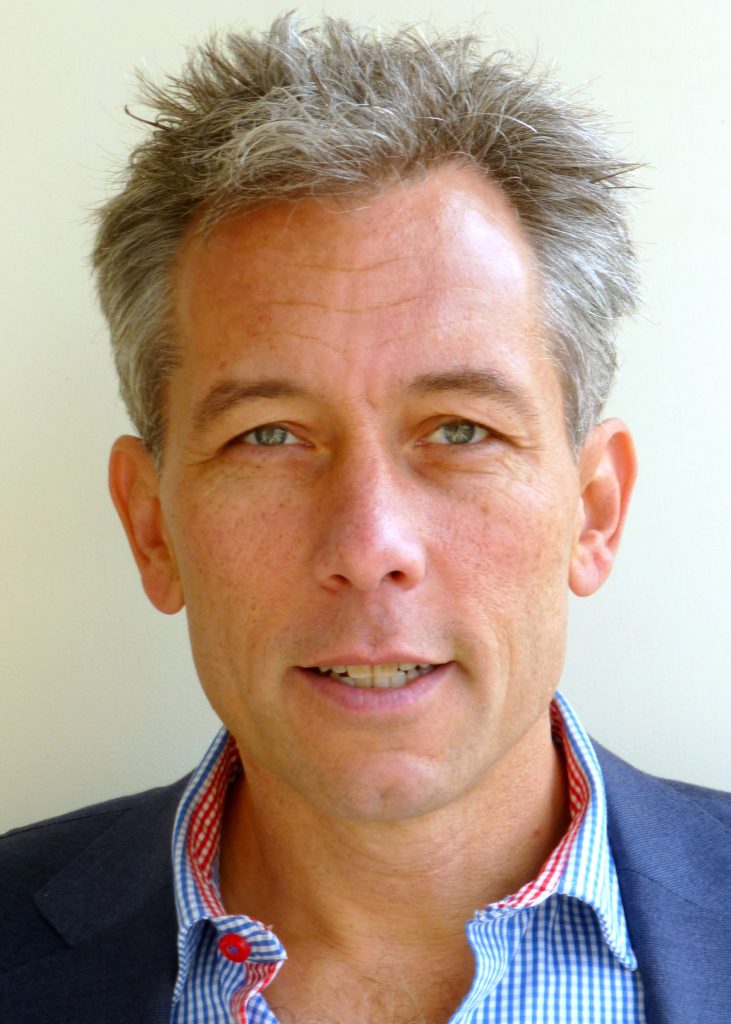 David Zetland, Assistant Professor, Leiden University College
David Zetland, Assistant Professor, Leiden University College
Constantly improving technology means lower costs for desalination, but also lower costs for similar technology like wastewater recycling. Cities interested in saving money should therefore always consider recycling before desalinating water. From a political perspective, this can also be easier, as wastewater is easier to access than salty or brackish water that may be part of fragile ecosystems. Both of these technologies are less efficient than using rain water and cheaper surface and ground sources, of course, so we’re talking about ‘always more competitive, never the most competitive’.
How might desalination cause as many problems as it solves, or indeed solve more problems than it creates?
Canet, Veolia
It is difficult to weigh the social developments of a remote and thirsty region created by the viability of desalinated water versus the environmental problems created by brine rejection, global warming pollution, and water pricing for a low-income community. The only recommendation is that desalination projects should be done after a detailed feasibility study where comparisons between alternative solutions such as wastewater reuse, ground water, or recharged water tables are available for a final decision.
Cooley, Pacific Institute
Poorly planned, sited, or executed desalination projects would create as many or more problems than they solve. Indeed, the siting, building, and operation of desalination facilities are likely to be delayed or halted if local conditions, sentiments and the public interest are not adequately acknowledged and addressed. To help address these issues, the process of designing, permitting, and developing desalination facilities must be transparent and open. Moreover, affected community members should be invited to participate in desalination project planning, implementation, and management during the early stages of the process.
Desalination solves problems; it does not create them. It is an essential part of the water supply in many parts of the world, providing vital freshwater resources to growing populations and economies. It is unique in its ability to provide our thirsty planet with the only new and reliable source of freshwater. As our world deals with increasing water scarcity and the effects of climate change, seawater desalination becomes an ever more important strategy to ensure an adequate and essentially drought-proof supply of freshwater.
Neymon, Suez
Where there is a shortage of resources, desalination is the only solution able to supply water and thus, allow human development. Its outcomes are more positive than the effects resulting from its higher energy consumption compared to conventional solutions, or the discharge of concentrated water (brine) in the sea. In the last 20 years, energy use has significantly fallen. For example, daily energy consumption to supply desalinated water to a family of four is the equivalent to ironing clothes for one hour or using a laptop for a day.
McCarthy, United4Water and IDA
It is difficult to visualise a situation where desalination causes more problems than it solves or fails to solve more problems than it creates. Desalination requires energy, however there is great progress in the use of clean, renewable energy for desalination. The first utility size desalination plant using concentrated solar power (CSP) is under construction in Saudi Arabia. Seawater desalination plants must have dilution methods and outtakes that are carefully and correctly designed to discharge the treated brine at distances and depths that avoid harming the marine environment and marine life. For inland facilities that are desalinating brackish ground water, there is promising ongoing research in chemical and electrical methods of extracting the salt from the resulting brine. These could also be used to reduce brine from seawater desalination.
Scow, Food & Water Watch
Desalination creates many problems. It can be greater than ten times more energy intensive than other supply sources, thus potentially spurring their emission of global warming pollution. Producing water through ocean desalination costs three or more times what it costs to produce water from traditional supplies. It often requires multiple subsidies of both water and electricity to break even, and it entails pricey upfront construction and long-term operation and maintenance costs. Many proposed ocean desalination plants are now planning to rely on ‘once-through’ intake structures that kill fish and other organisms. Further, the disposal of the brine also has the potential to upset our delicate coastal ecosystems.
Zetland, Leiden University College
Desalination adds to supply, thereby reducing water scarcity. If demand is not capped (growth continues; lawns get bigger, and so on), then scarcity will return. The water authority in San Diego is bringing in desalinated water supplies of about 7 percent of total use but spreading US$1 billion of new costs among all customers. The small change in price is unlikely to dampen demand from existing customers or people moving to the area, which means that San Diego will again face water scarcity problems in the future.
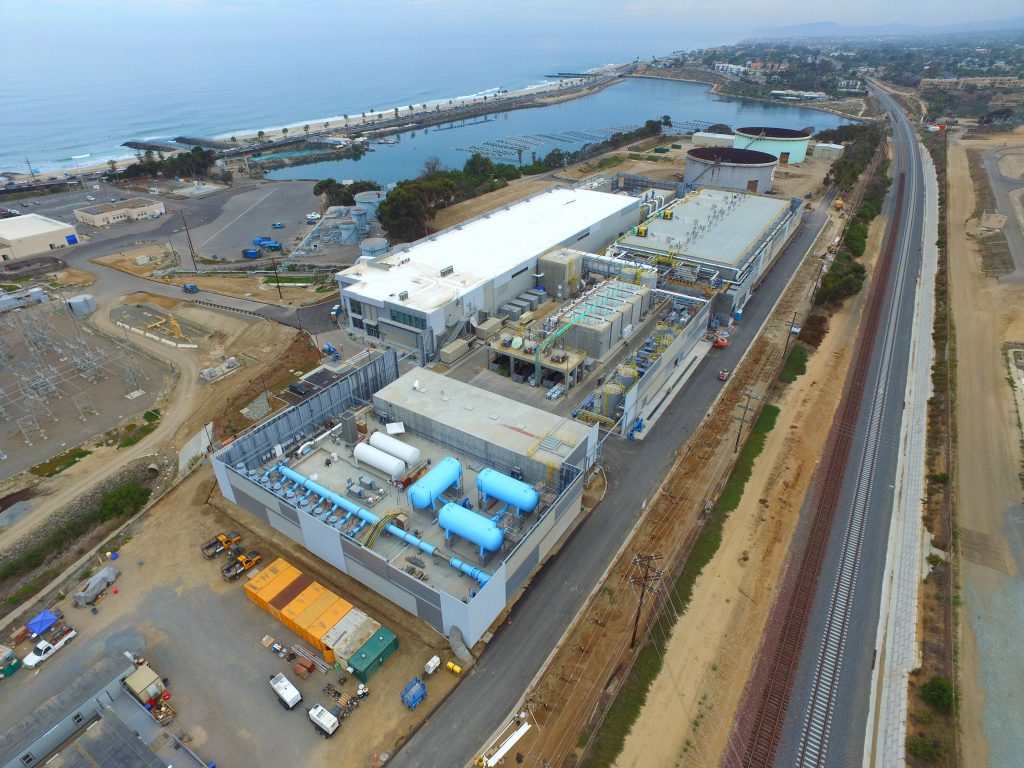
Which beneficiaries should directly underwrite or finance investments in desalination plants, and why?
Canet, Veolia
With energy being the key element in producing desalinated water, it seems normal to consider that large energy producing companies like EDF, ENGIE, ACWA Power, and others should be investors. However, very often the costs of desalinated water is greatly affected by financing constraints and guarantees required by banks, so it could be cheaper to require governments or international financial institutions to give soft loans and/or guarantees to such projects.
Cooley, Pacific Institute
The financing of a desalination plant will depend on the unique circumstances of a given project. As a general rule, all beneficiaries of the desalination plant should pay for a portion of the project. The water users are the major beneficiaries of a project and would therefore likely bear much of the cost. Companies that profit from the project are other possible beneficiaries. Public subsidies are only appropriate in cases where the facilities come with an explicit guarantee of public benefits, such as restoration of ecosystem flows.
Gabbrielli, Toray and IDA
As desalination and reuse have become a mainstream freshwater supply alternative, their underwriting or financing will follow the same pattern as with other freshwater resources. This is clearly the case with municipal water utilities, whether this is done on a direct investment basis or through a form of public-private partnership. What seems to be happening more is that industries are deciding to invest in desalination and reuse within their fences to become independent from the services of the local utility. This is also done to secure its water supplies in case the utility has to cut the supply in a situation of drought, when supply for human consumption takes priority.
Neymon, Suez
Most desalination plants are used for drinking water supply. Therefore the public sector has to underwrite such projects to guarantee delivery and attract contractors. In some projects, the private sector could become involved through a dedicated investment vehicle that will need to be endowed with guarantees to deliver the project, securing its financing. Such guarantees come from the public sector such as land agreements, water purchase agreements, electrical connection agreements, and others.
McCarthy, United4Water and IDA
Financing should be shared between government agencies originating the projects and private sources of finance investing in the construction and operation of the plants. Governments should finance the infrastructure for water distribution and wastewater recovery. Private capital should finance the plants and their supporting facilities. Government contracting and regulatory policies should facilitate this combination.
Scow, Food & Water Watch
Ocean desalination provides a new opportunity for private corporations to own and sell water, creating the possibility that private corporations would rate-gauge thirsty populations. Food & Water Watch values water as a public resource that must be managed by public institutions and not be privatised. A recent Food & Water Watch analysis compared average water rates charged by publicly and privately owned utilities in four US states–California, Illinois, Wisconsin, and New York–and found that privately owned water utilities charge customers significantly higher water rates than their publicly owned counterparts: anywhere from 13 percent to almost 50 percent more.
Zetland, Leiden University College
The users of the water, and in particular the new users of the water should be the underwriters. Economists tend to say that everyone should face the marginal cost of their use, that is the cost of getting another unit, to help them see the real cost of scarcity. Most water utilities charge average costs, which means that people use too much water. Say, for example, you get half your supply from groundwater that costs US$1/m3 and half from desalinated water that costs US$2/m3. Most utilities would sell that water at US$1.50/m3, which does mean that costs match revenues, but also means they are selling US$2 water for US$1.50. It’s much better– from the perspective of efficiency and fiscal security–to charge US$2/m3 on all water. The utility can then send back the ‘profits’ (on groundwater) by reducing fixed charges to customers. This works for all water supply systems, but it’s especially useful for desalination because it’s so expensive.
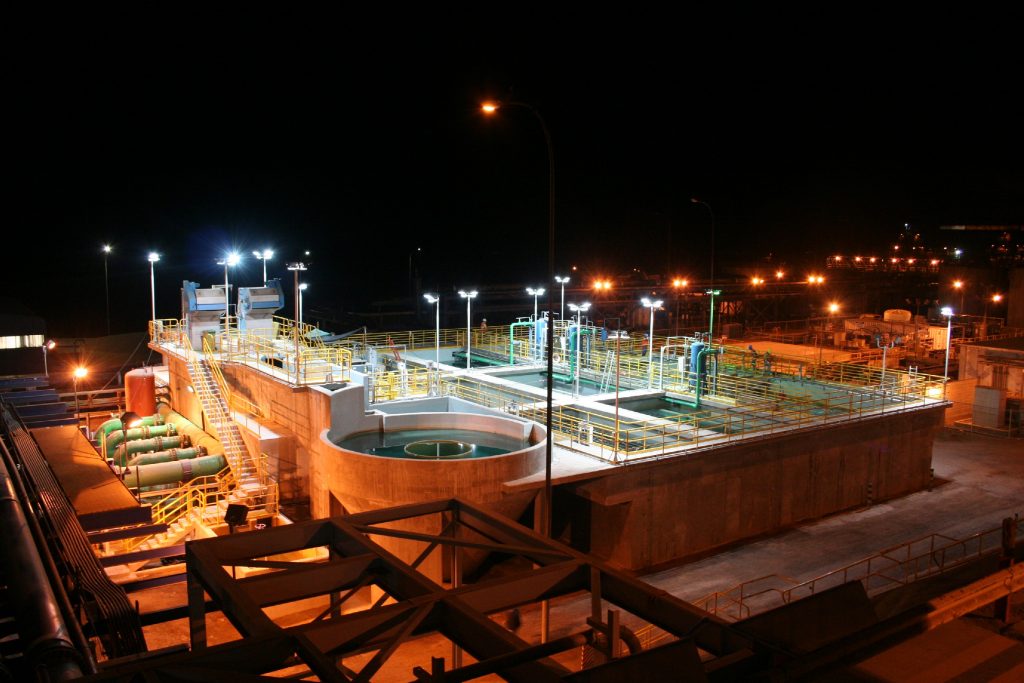
When is small, distributed or large- scale centralised desalination preferable?
Canet, Veolia
A key factor for desalination plants is energy. The drive behind installing a small or a large centralised desalination plant is the availability of energy at a given location. This means that when there is no issue to build a large power plant then a large desalination plant is obvious. However, when you use the grid or use small solar or wind power, then a small plant is better.
Cooley, Pacific Institute
The unit cost of water from small systems is typically more expensive than large systems due to economies of scale. As a result, project developers may build large plants in an effort to capture economies of scale and reduce the unit cost of water; however, this can lead to oversized projects that ultimately threaten its long-term viability. As a general rule, the size of the facility should be determined by the demonstrated need for the water produced. Additional capacity to desalinate water can be added as needed.
Gabbrielli, Toray and IDA
Careful estimates of the costs of distribution associated with the alternative number of plants and sizes have to be looked at in their entirety, and the most economical solution should be chosen. In areas with several small centres within a reasonable number of kilometres, the alternative to provide a centralised desalination plant and then distribute the product by pipe or tank trucks can produce a result similar to that of providing individual small-scale plants. In many cases, the apparent safety of a centralised operation can be offset by the increased reliability of an operation ‘bought’ by the same community, which takes direct responsibility.
Neymon, Suez
From an economic and lower water rates perspective, a large-scale centralised desalination plant is preferable, except if the distance to feed the population is too far, and huge networks and pumping stations are required. Only in isolated villages or regions, is building small plants an acceptable solution, combining them with the use of renewable energies.
McCarthy, United4Water and IDA
Transporting water is expensive. Small, distributed desalination facilities are best suited for the desalination of brackish groundwater. Smaller seawater desalination plants are also appropriate for coastal towns. Large- scale desalination is best suited for seawater desalination for large coastal urban areas or industrial complexes.
Scow, Food & Water Watch
Small is preferable, but only if absolutely necessary and all other options have been exhausted.
Zetland, Leiden University College
Scale should reflect political realities. A smaller plant may serve a single community better than a larger one that drives conflict among several communities sharing it.
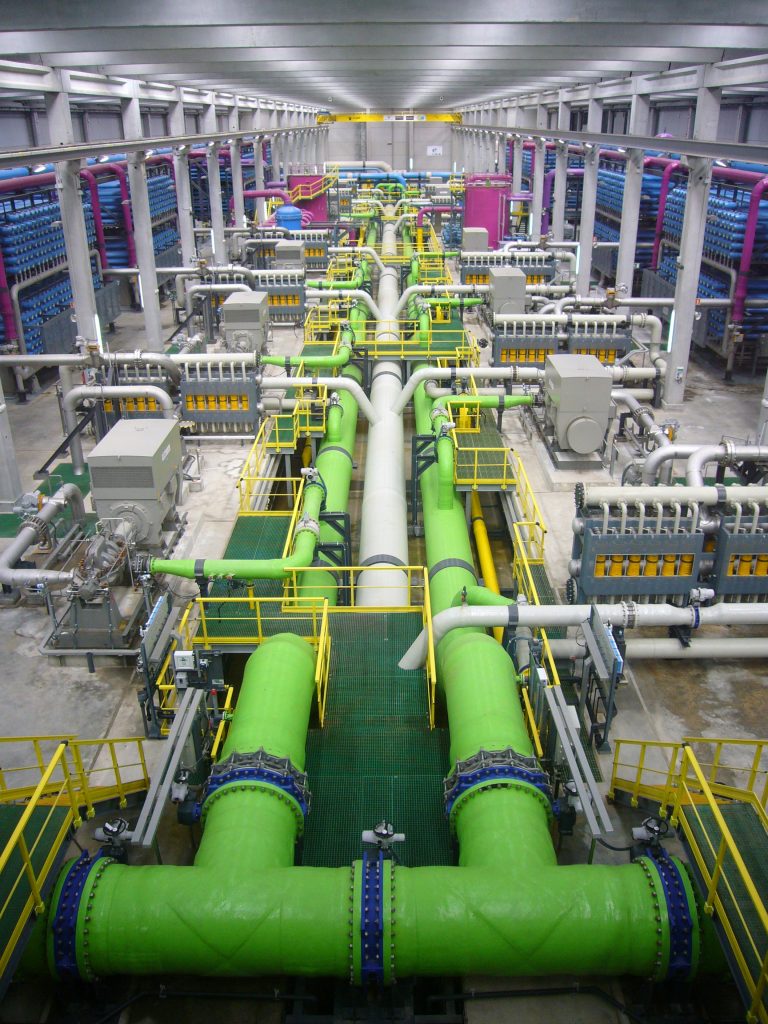
How can desalination best mitigate and address the high energy, cost, and toxic effluent from membrane problems? And what is the best way to reduce the environmental impact of polluted membranes after use?
Canet, Veolia
Firstly developments of new membranes, energy recovery systems and new processes for pretreatment have already addressed the cost and the high-energy consumption for desalinated water. New developments such as forward osmosis and hybrid desalination are going to further reduce costs and energy consumption. What to do with used membranes is indeed an issue but we should consider that membrane life has been considerably increased and it is now standard to change membranes after only eight to nine years. Often those used membranes can be used a second time for a few more years. In addition, recycling companies have not looked at membrane products yet, as the quantities are quite small, but in a few years there may well be a solution and a recycling process found.
Cooley, Pacific Institute
Desalination increases the water supplier’s exposure to energy price variability and greenhouse gas emissions. Some of the most promising research on reducing energy use is focused on alternative desalination technologies, like forward osmosis and membrane distillation; hybrid membrane-thermal desalination; and improved energy recovery devices. While reducing energy use will reduce greenhouse gas emissions, other mitigation strategies include using renewable energy and purchasing carbon offsets. Even renewables have a social, economic, and environmental cost, albeit much less than conventional fossil fuels. Marine impacts of desalination must be understood and mitigated. More research is needed, especially on the long-term impacts. We do, however, know that there are several operational, design, and technological measures available to reduce the marine impacts of open water intakes and brine disposal.
Gabbrielli, Toray and IDA
The high-energy costs of desalination are partly a myth, as by now desalination and reuse often uses less energy than traditional treatment methods or transferring water from farther away. With known technologies like reverse osmosis, there is not much scope for further reduction in energy consumption. Where there is great potential is the increasing use of renewable energy in its several forms for desalination. Luckily desalination normally does not produce problematic wastes, and the concentrate, in the case of seawater desalination, is nothing more than concentrated seawater that can be discharged with practically no environmental effect if the discharge is located and designed correctly.
Neymon, Suez
Energy use is relative, and in the last 20 years, it has significantly fallen. The desalination market is so competitive that the cost of desalination plants has diminished over the years. While it remains a costly process among drinking water treatments, it should be pointed out that the water produced is of exceptional quality. When membrane production capacity is reduced, and they have reached the end of their lifecycle, the best way to discard them is to recycle their components, and incinerate them jointly with domestic waste making them a source of energy generation.
McCarthy, United4Water and IDA
In the last decade, advances in desalination technology have reduced the cost of membrane desalination by 50 percent. Energy is the largest single cost of desalination (44 percent of the total). The reduction means significantly less energy is required. An alternative to fossil fuels is the use of renewable energy, solar or wind, which has no emissions and, after the initial investment, much lower costs. Many regions where desalination is needed have ample sunshine. The newly formed Global Clean Water Desalination Alliance, H2O minus CO2, is promoting the use of renewable energy for desalination. The alliance was launched at the Paris Climate negotiations and aims for 80 percent to 100 percent of new desalination plants and at least 10 percent of old plants to be powered by clean energy by 2035.
Scow, Food & Water Watch
Because there are no ways to truly mitigate these major impacts, and better options exist, desalination should not be pursued in general.
Zetland, Leiden University College
I’d encourage the use of ‘best technology’ by making polluters pay for whatever impacts they are generating.
The post When is desalination the right choice? appeared first on The Source.
]]>The post Setting the agenda for the High-Level Panel appeared first on The Source.
]]>Nick Michell spoke to leading water experts attending World Water Week in Stockholm, Sweden, about the future for the United Nations and World Bank Group High-Level Panel on Water
What one priority, exactly, should the High-Level Panel on Water do first, how should they do it, and why?
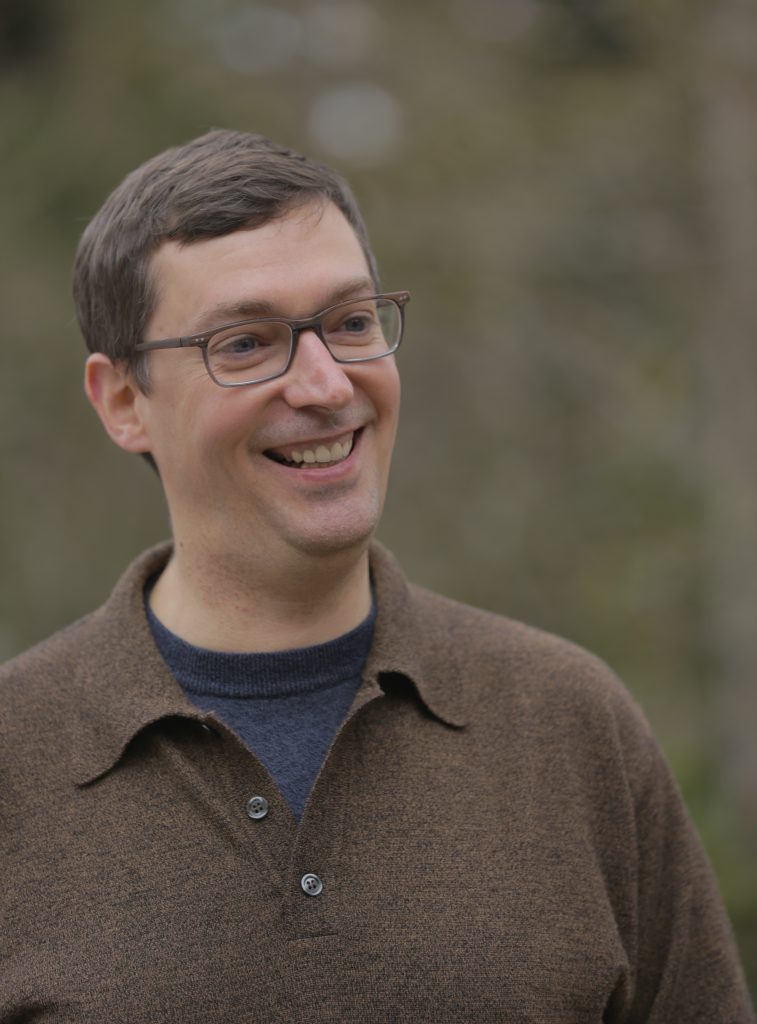 John H. Matthews, Secretariat Coordinator, Alliance for Global Water Adaptation (AGWA)
John H. Matthews, Secretariat Coordinator, Alliance for Global Water Adaptation (AGWA)
“In terms of a recommendation for the High-Level Panel on Water, I’d say treating water not as a sector but as an enabler for development, integral for Sustainable Development Goals and other sectors. It is also important to ensure that they make good use of emerging sustainable water management knowledge and practice.”
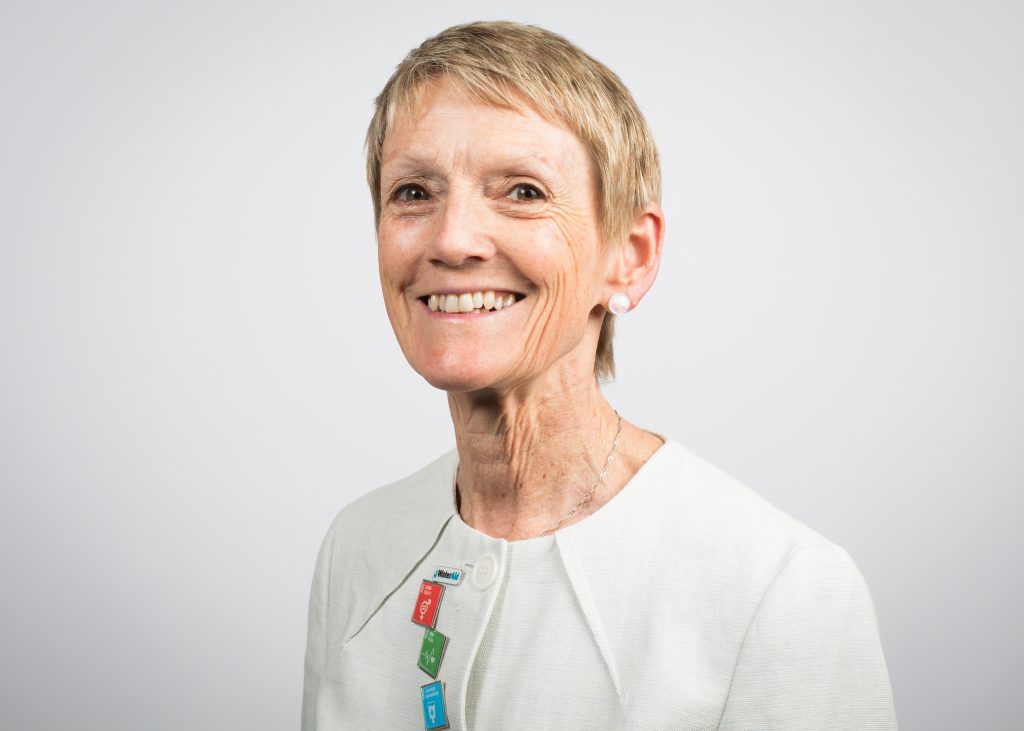 Barbara Frost, Chief Executive, WaterAid UK
Barbara Frost, Chief Executive, WaterAid UK
“We believe what is required is for those on the panel to galvanise the efforts of governments and their development partners to collaborate and focus on developing credible national plans that attract the right investment to deliver universal access to water and sanitation services (Goal 6), as without this the goal of eradicating extreme poverty by 2030 will not be reached. Accountability for this and “leaving no one behind” should be vested in the Sanitation and Water for All partnership.
Sustainable services that reach the poor will not be achieved by a single initiative. It requires governments having the right plans in place, taking accountability and enabling private sector investment through proper regulation that ensures affordable services reach even the most marginalised communities and that promotes effective consumer involvement.”
 Dheigen Naidoo, Chief Executive Officer, Water Research Commission
Dheigen Naidoo, Chief Executive Officer, Water Research Commission
“While the world’s water challenges are well described in UN reports, the Global Risk Registers, national statements and the general, very justified, outcry from civil society, we have seen no significant water behaviour changes outside drought conditions in any part of the world, developed or developing.
The key issue is a lack of Global Water Solidarity in action. There is a need for a deepening of the understanding, not only of the value of water, but also of the need for sustained collective action to work toward global water security, which in turn enables global food, health and energy security and ultimately global peace and stability. In order to catalyse a worldwide water solidarity in action, I would ask UN Secretary-General Ban Ki-moon’s High-Level Panel on Water to launch a Global Water Ubuntu campaign.”
 Anders Berntell, Executive Director, 2030 Water Resources Group/IFC
Anders Berntell, Executive Director, 2030 Water Resources Group/IFC
“I think we need to focus on, and this includes the High-Level Panel on Water, financing and investments in the water sector. I see the water sector as very broad, so it is not just the traditional aspects of water supply and sanitation that we need to invest in, but also areas such as agriculture, municipal and industrial wastewater, effluent water, reuse and recycling for various purposes and of course water storage.
The financial models that we have today are not working so we need to develop new, innovative ones. There is not one business case that fits all, so we need a multitude of new models, relating to the different kind of investments you are looking for. We can use some of the more traditional methods, whether it is public, private or PPPs, but we also need to look towards and develop avenues like social entrepreneurship and green bonds. But we have to go further and develop new financial solutions that we haven’t really thought of before.”
 Jaime Melo Baptista, Principal Researcher of the National Laboratory of Civil Engineering, Portugal, and Chairman of the Strategic Council of the Portuguese Water Partnership
Jaime Melo Baptista, Principal Researcher of the National Laboratory of Civil Engineering, Portugal, and Chairman of the Strategic Council of the Portuguese Water Partnership
“The priority must be to encourage the adoption of effective and sound public policies at country level, to accelerate availability and sustainable management of water supply and sanitation for all. The IWA Lisbon Charter for public policy and effective regulation recommends the methodology. A public policy needs an integrated approach and should include: adoption of strategic plans; definition of the legal and institutional framework; the governance of the services; the access targets and quality of service goals; the tariff policy; provision and management of the financial resources; construction of the infrastructure; improving the structural and operational efficiency; human resources capacity building; promotion of research; development of the economic activity; introduction of competition; protection and involvement of users; and provision of information.
Financial requirements to provide adequate water infrastructure across the globe until 2030 are probably US$12 trillion. Money exists, but how can we attract investment to the sector? This depends on gaining trust and confidence from financial organisations. To do this we need to implement sound and credible public policies.”
 Professor Joan Rose, Homer Nowlin Chair in Water research, Michigan State University, and 2016 Stockholm Water Prize Laureate
Professor Joan Rose, Homer Nowlin Chair in Water research, Michigan State University, and 2016 Stockholm Water Prize Laureate
“If one examines the SDG 6 sub-goals carefully it is the control of human pathogens associated with excreta and sewage that will ultimately improve health and economic well-being of communities. The first priority has to be wastewater treatment to promote water quality for all ecosystem services and promote better resource management. There is not a “one- size-fits-all” approach for building wastewater infrastructure that meets the needs of all that is efficient, easily cleaned and safe. Information is available on the adequacy of small and large systems (dry and wet systems) for excreta and wastewater treatment so that appropriate choices can be made.
There are three key recommendations which will move the SDG6 goal forward and will propel the world forward in meeting their water priorities in the next 15 years: bring Ministries of Finance, Environment/ Water and Health together to discuss the value of wastewater treatment and resource recovery and the impact on economic development; set up regional water quality diagnostic centres for verification and capacity building; and build innovative pilot and demonstration facilities.”
 Yasmin Siddiqi, Principal Water Resources Specialist, Asian Development Bank
Yasmin Siddiqi, Principal Water Resources Specialist, Asian Development Bank
“The first priority should be to drive equitable distribution of water services and infrastructure between urban rich and poor and urban and rural areas. There is a widening gap in this context as reported by the Asian Development Outlook 2016 with some countries like Afghanistan, Cambodia, and Timor-Leste showing an increased rural–urban gap in both improved and piped water supply. In rural areas, Mongolia has the largest gap between rich and poor and similar high disparities are seen in improved access to sanitation in urban areas in South Asia with gaps of up to 80 percentage points between rich and poor.
Policies and interventions need to improve the targeting of actions for inclusive development and to achieve Sustainable Development Goal 6. Solutions depend on a country’s stage of economic development and extent of rural–urban integration. Broad based options include capturing better (and disaggregated) water supply and sanitation data to identify inequalities and target interventions. Also increasing support for water supply and sanitation and integrating it into project design across all regions.”
 James Dalton, Coordinator Global Water Initiatives, IUCN Global Water Programme
James Dalton, Coordinator Global Water Initiatives, IUCN Global Water Programme
“The main focus must be on protecting and restoring our freshwater systems. Trying to squeeze more out of rivers, glaciers, and groundwater is no longer an option. The High-Level Panel should focus on improving water allocation through better governance mechanisms that allow for greater coordination and cooperation among diverse water actors and sectors. We must all deliver more equitable allocations of water resources, sharing of benefits among multiple competing needs and protection and restoration of freshwater ecosystems.
We also need to increase investment in ecosystems as natural water infrastructure based on verifiable returns for ecosystem health, livelihoods and social development and economic growth. It is important to re-frame integrated water resources management using the strengths of multiple sectors and actors at different scales–the current modus operandi is not structured adequately to deal with the trillion dollar problem we face.”
 Benedito Braga, President, World Water Council
Benedito Braga, President, World Water Council
“Financing, financing and financing; not necessarily in that order. Why is this important? Because we know the actions that have to be implemented to make the less fortunate societies resilient to climate change impacts. It is important to stress that by and large the impacts of climate change are manifested through, by and with water. Longer droughts and more intense floods are likely to be more frequent under future climate conditions. How can this be done? Basically we need to increase our water storage capacity. For example, Ethiopia and Australia face similar climatic conditions, but their water storage capacity are 45 m3/inhabitant-year and 5,000 m3/inhabitant-year, respectively.
At the same time we need to have the proper governance structure in place, that is laws, regulations and institutions to make sure the infrastructure is used in a sustainable framework. This infrastructure and governance can only be implemented if the proper financing mechanisms are in place. This includes the use of the traditional IFI (World Bank, regional multilateral banks) and more recently pension funds, sovereign wealth funds and the green fund under discussion in the UN Climate Conventions.”
The post Setting the agenda for the High-Level Panel appeared first on The Source.
]]>The post Bringing Order from Statistical Overload appeared first on The Source.
]]>*Fourth interview in Aqua-Statisticians: A five part series

Marisha Wojciechowska-Shibuya: Given universal access to satellite technology and modeling software capacity available to everyone, what can the UN do that uniquely adds value?
Karen Frenken: New technologies improve the quantity and availability of water data. But AQUASTAT’s structure and experience helps organize and calibrate that data, ensures access to the data remains free, and makes use of remote sensing and performs modeling to fill up data gaps.
For example, we combine statistics, modeling and remote sensing in the latest global map of irrigation areas, developed in collaboration with the University of Bonn. In this case, sub-national irrigation statistics were combined with geospatial information on the position and extent of irrigation schemes (to compute the fraction of 5 arc minute cells that were equipped for irrigation), otherwise referred to as irrigation density.

We applied a global model to simulate consumptive water uses for irrigation by source of water (surface water, groundwater or non-conventional sources of water such as direct use of wastewater, agricultural drainage water and desalinated water). And this inventory now provides data for more than 15 000 national and sub-national administrative units.
A second valuable use of remote sensing lies in the assessment of water productivity gaps. By monitoring, and comparing current productivity levels in various agricultural systems, we can analyse what causes productivity gaps, and find ways to reduce them.
Breakthroughs in earth observation science allow us to extract key data on sustainable agricultural production, based on spatial satellite measurements. FAO in partnership with UNESCO-IHE Institute for Water and Education is applying this approach in a countries where AQUASTAT has provided the basic data.
In a third initiative, AQUASTAT has undertaken a modeling exercise for the years 2000 and 2005 that aims to assess industrial and municipal water withdrawals.
As for agricultural water withdrawals, statistical data on irrigated crops – collected during AQUASTAT country updates – make it possible to prepare a typical irrigated crop calendar, by country. Using a water balance model, AQUASTAT has thus undertaken a review of irrigation water requirement and irrigation water withdrawals.
Despite these advances, all remote sensing and modeling activities still rely on statistical data for their calibration. This endures as a central activity for AQUASTAT, on which researchers and modelers rely.
Indeed, the World Resources Institute’s “Aqueduct”, Microsoft’s “Water Stress” index, and the World Business Council for Sustainable Development’s “Global Water Tool” all use AQUASTAT and would struggle to launch or maintain these programmes without us.
The post Bringing Order from Statistical Overload appeared first on The Source.
]]>The post Oded Distel, Head of New Tech Program, Ministry of Economy, and Director of Foreign Investments and Eco Systems appeared first on The Source.
]]>Israel excels in managing water use where there is very little to be found or during periods of shortage. What factors have driven Israel to become a leader in water management?
The slogan ‘necessity is the mother of invention’ is clearly the case in Israel with regards to water management. Lack of water has been an issue in Israel from the founding of the country and even before. To this day, water management in Israel is considered a national priority and receives attention at the highest political level. The need-based factors that have driven Israel to become a world-leader in water management are:
1. Domestic use: Israelis expect and demand continuous provision of water resources in the home and garden, based on a high modern standard of living, as well as parks and public green areas.
2. Agriculture: Since the founding of the country and before, Israel has lived by the motto ‘making the desert bloom’, while striving for food independence. The government has taken upon itself the goal of supplying water for most of Israel’s fresh produce.
3. Industry: Throughout its history, Israel has set out to build a strong and modern industry where a lack of water will not be an obstacle. The bottom line is that leadership in water management issues is a question of mindset and the deep understanding that water is a very precious resource that must be handled and managed with extra care.
Beyond managing water scarcity, in which other areas does Israel feel it can offer expertise?
Water management has to be based on several elements: a clear legal framework, holistic and synergetic structuring of the water sector, proven functional business models based on water prices, social consciousness around water conservation and adopting modern and efficient technologies in order to meet the national goals mentioned above. Israel is eager to share its know-how and experience including our mistakes in all of these areas with our partners all over the world.
Can you mention some new technologies or fields that Israeli water companies are moving into?
Israeli companies are active in every segment of the water sector, including drip and precision irrigation, water metering and monitoring, leak detection, water quality, water and wastewater treatment, desalination, water security and much more.
Because Israel is a leader in numerous tech sectors, one interesting aspect of the WaTech ecosystem is the way in which technologies from other sectors like communication or life sciences flow into the water arena. Those companies and entrepreneurs are actually bringing waves of new and fresh approaches to the water sector. Ideas such as analysing urban water loss based on satellite images of a city or based on big data anal ysis and anomaly detection are some examples for new and inspiring technologies that can fundamentally change the global water market. Other examples have to do with wastewater treatment and the ability to utilise the energy within the waste itself to help minimise or completely eliminate the need to add energy to the process. This can lead to clean water for irrigation and energy that was produced from organic elements.

Where are your biggest markets and are you looking to move into new ones?
Water is a global challenge. All countries in world are facing water issues, with different challenges and at varying levels. Israel’s experience is relevant to most of these markets and therefore the Israeli water industry operates globally. Our main markets are the US and Europe, but China, India, Brazil and many other countries are facing dramatic challenges in their local water markets such as growing populations, higher standards of living, urbanisation and climate change. All of these and other factors are pushing the water challenge higher and higher on the world agenda, and our solutions are helping to meet these challenges head on.
Do you tend to work with more developed or developing countries?
We work with everybody. The biggest task is to change the mindset of both political leaders and the general public with regards to water. I hear in many places around the world that “Water is God’s gift to mankind”. The subtext of this phrase is that water should be free for the end-user. This is a very problematic approach that leads directly to inefficient water systems, a conservative approach to innovation and poor service to the public. Our message about the fundamental changes that need to be fostered to secure a future with enough water for everyone is suitable for both developed and developing countries.
What are the advantages that the Israeli economy has in identifying, building and bringing to market new water technologies?
Israel sees great potential for its water industry to become one of its economic growth engines. The global challenges combined with Israel’s vast experience and achievements put the Israeli water industry in a very significant position.
How do you structure partnerships between the government, private sector and academia?
Israel NewTech is a national programme spearheaded by the Israeli Ministry of Economy and Industry. The programme brings together ten different ministries to combine efforts in order to realise the full potential of the Israeli water industry in the global market. The programme works very closely with the private sector and with academia.
The team at Israel NewTech serves as a national hub for our water eco-system, building relationships between Israeli tech, service companies and global clients and investors.
Which countries do your biggest competitors come from?
There are many countries with strong water industries including Holland, Singapore, France, Germany, China, UK and the US, to name just a few. Part of our role is to forge bold business models conducive to water efficiency and help foster the determination to take the necessary decisions to change outdated mindsets. Once we overcome those obstacles, the prospects for this industry are very positive.
The post Oded Distel, Head of New Tech Program, Ministry of Economy, and Director of Foreign Investments and Eco Systems appeared first on The Source.
]]>The post Peter Joo Hee Ng, Chief Executive of PUB, Singapore’s national water agency appeared first on The Source.
]]>A combination of maximising rainwater collection, along with intensive water reuse and use of desalination, has made Singapore a global leader as far as water management is concerned. Nick Michell spoke to Peter Joo Hee Ng, Chief Executive of PUB, Singapore’s national water agency, about the country’s past successes and how the country plans to innovate to meet future demands
Over the last 50 years Singapore has been hugely successful in developing a diversi ed and robust water supply. How was this achieved and what are the most pressing issues for the next 50 years?
The most pressing issue we have is that our current 99-year water agreement lapses in 2061. The deal with Malaysia, on a good day can account for half of our water, and so we have to plan for a scenario where this source is no longer available.
Singapore is a small place, smaller than London. We do get rain but there is just not enough room for us to collect all the water that falls and store it to meet our needs, so we need to look at alternative sources. We decided to invest in drought resistant sources, such as desalination and recycled water, which we call NEWater.
Our NEWater is not simply used for process purposes, we can even drink it, and very few places in the world treat their recycled water to a potable standard. Recycled water is a very important source for us now and we continue to increase capacity. At the same time, we attempt to catch every drop of rain that falls in Singapore. This means turning as much of Singapore into a catchment area as possible, so we have managed to convert two-thirds of the country so far. We try to continuously reuse water, making water from the sewers potable and then recycling it into the drinking water supply.
Singapore is an island, surrounded by sea, and therefore ideal for desalination processes. However, in comparison to recycled water, desalination is a very expensive process and one of our major goals is to bring down the costs.
I want to emphasise that our success has not been down to us being smarter than everyone else or spending the most money, it is simply driven by scarcity. No big city in the world is self-sufficient in water, whether it is London, New York or Tokyo. It is the scarcity that drives our research and innovation.
NEWater and desalination were made possible by technological breakthroughs following decades of research e orts. How does PUB encourage and actively seek continued investment in research and development on water technology?
Water research is part of the national research programme, which is run centrally and allocates funding. Obviously water is an important area of the research for us at PUB and we get a generous amount in state funding.
You cannot succeed by simply throwing money at it. You must also have human talent. We have a programme that sends some of our best and brightest to PhD programmes in water. In PUB itself we have over 40 people with PhDs and I don’t think many utilities in the world can boast the same.
Lastly you need to have a balanced system, you need a critical mass. You can’t just rely on your own PhDs working in labs, you need the leading players in the water industry to come and set up shop in Singapore so that they are close to the research and can also participate in this research. So over the years we’ve built Singapore into a water hub. There are 180 water companies and more than 20 research institutions. The two water research institutions in our two national universities are ranked numbers one and two in the world.
How closely does PUB work with the public and private sectors to test-bed potential solutions that could help keep water supply both sustainable and a ordable?
Testing is very important. The research has to go from the lab bench to the real world, it needs to get tested. So we open all our plants for test-bedding. If you have a piece of promising research, which seems to work in the lab, bring it to our plant and if we can get an industry partner that is interested in this solution, because they believe they could make money out of this, we will work together to make it a success. We have schemes to test technologies in real time under real world conditions, either in one of our water reclamation or treatment plants. So that completes the ecosystem. It is very easy to talk about what is required to support and sustain water research but in very few places in the world will you see an ecosystem replicated like the one we have in Singapore.
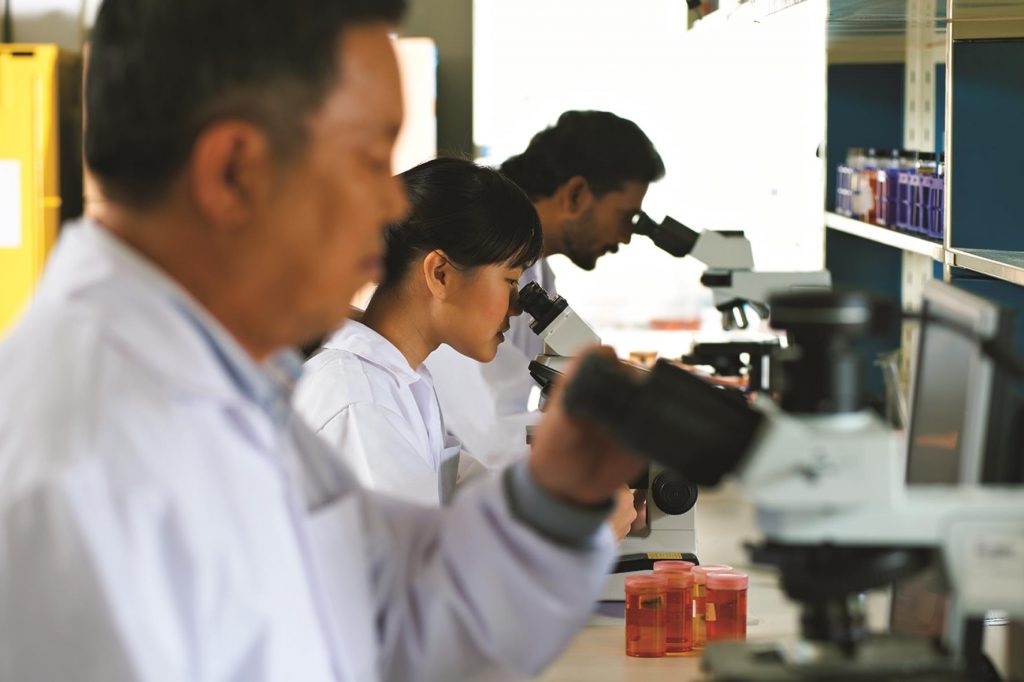
How much of a success has the Marina Reservoir been since its creation in 2008 and what have been the benefits? How important is urban stormwater harvesting in creating water sustainability?
Marina Reservoir is just one of our 17 reservoirs and it’s not even a very big one. The importance about Marina is how it was created. Before this, the Singapore River and Kallang River used to flow into the Marina basin and they were, in reality, open sewers. The vision was to create a freshwater reservoir in the heart of the city, but to achieve this we had to clean up both rivers, which was a massive undertaking that took us more than 10 years. That I believe is the great success; that we were able to clean up these two rivers and then build a barrage to block off the sea, and so to create a fresh water reservoir.
Symbolically it is our most important reservoir, because everyone sees it and because of what went into building it. It’s a beautiful place but as a store of water it is not really a large site.
How important has the Private Public Partnership (PPP) approach been in setting up desalination plants?
PPPs are important for us because we believe the private sector can often do a much better job than the state. We have two desalination plants now and both are PPPs and we get a good price for the water. But we don’t believe it should be all PPPs either. There should be balance in our portfolio. A third desalination plant is under construction and that one will be owned and operated by PUB so that we can retain some expertise in running a desalination facility.
Since the introduction of NEWater in 2003 how has this reclaimed water become the pillar of Singapore’s water sustainability? How will PUB expand NEWater capacity so that it meets up to 55 percent of demand in the longer term?
As we speak we are building another NEWater factory, and when it’s completed by the end of this year we will have enough reclaimed water capacity to supply 40 percent of our demand. That will be a huge development. But we want more.
To achieve more we need to reclaim more sewage. We also have a deep tunnel sewerage system in Singapore. Other cities have combined sewers, so sewage and rainwater gets mixed together. In Singapore we have deliberately separated sewage from storm water, because storm water is also drinking water for us and we want to keep it clean and channel it to the reservoirs. Sewage is now also a source of water for us. We want to collect every drop and turn it into drinking water again. We have decided that the best way to do this is through a deep tunnel system. And so we’ve constructed a deep tunnel that runs from one corner of Singapore to the other. Sewage flows through it by gravity and is then brought to the surface into our water reclamation plant for treatment. The treated effluent is not discarded but further sent to a NEWater factory, to get treated some more to potable quality.
We intend to construct another deep sewerage tunnel, this time stretching from the city all the way to Tuas, which is another corner of Singapore where we will again build a water reclamation plant and a NEWater factory. This will allow us to collect and reclaim even more waste water. This new tunnel will complete our deep tunnel sewerage system and allow us to literally reclaim every drop of waste water in Singapore.
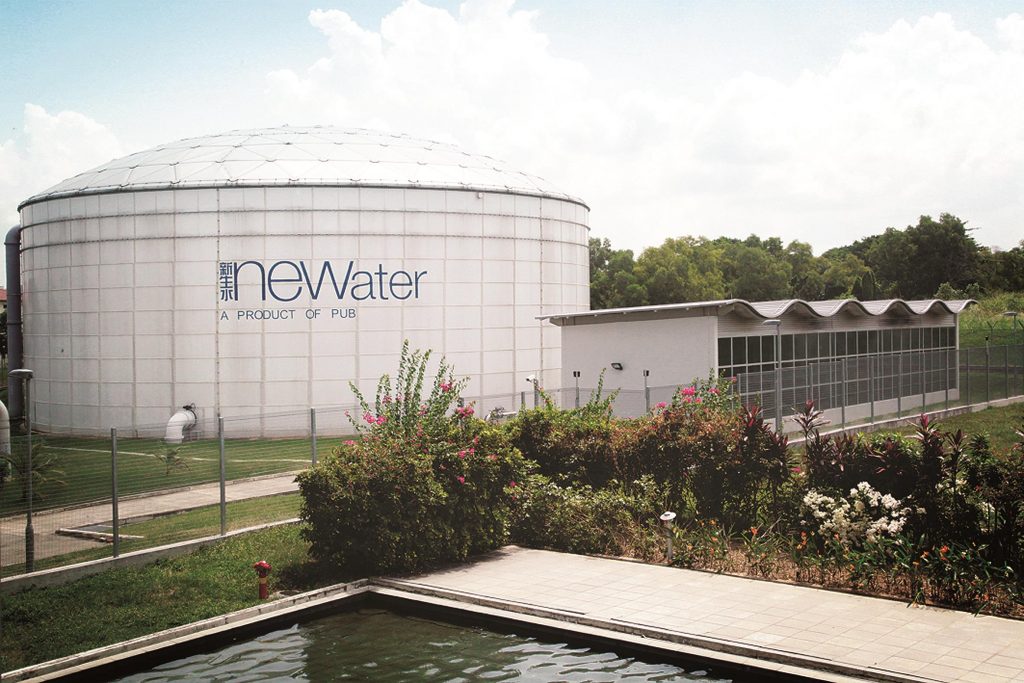
How is PUB working with Evoqua Water Technologies to pilot and demonstrate the use of electrochemical technology to desalinate seawater using half the energy?
When it comes to desalination, our aim is to bring down the cost of production. The primary cost driver is the energy or power uptake, now at 3.5 kWh/m3. We have a BHAG (big hairy audacious goal) for desalination, which is to halve this 3.5 kWh. And we believe that Evoqua’s technology can bring us some ways towards this target. It is now achieving 1.65 kWh/m3 but this on a pilot scale. The challenge obviously is to bring production up to an industrial level and see whether we can bring down the energy take even further. The Evoqua project is progressing well.
PUB has a vision to develop a Smart Water Grid that monitors water quality, pressure and detects pipe leaks in the water supply network by placing sensors throughout the network to collect real-time hydraulics and water quality data. How close is this vision to being realised and what will it entail to get there?
One of the major problems that every utility faces is unaccounted for water or non-revenue water. We in PUB want to minimise this as much as possible and have managed to reduce our losses down to 5 percent, which is pretty good. To bring it down further will require smart technology, and we have begun to put sensors all along our network. These sensors allow us to measure, among other things, pressure and acoustic quality, which then help us know about leaks faster and may even allow us to pre-empt a leak. Of course we also have sensors to measure the quality of the product we are carrying and these let us provide a consistently high-quality service to our customers.
What projects are being developed as part of the Active, Beautiful, Clean Waters (ABC Waters) Programme? What could be achieved between now and 2030?
The aim of the Active, Beautiful, Clean Waters (ABC Waters) Programme is less about making Singapore more beautiful but more to advance PUB’s mission, which is to provide good water, reclaim used water and tame stormwater. Canals used to be our pathways, large ugly concrete canals, which carried the rain to the reservoir or to the sea.
In the past, our approach was to keep people away from theme, sometimes even building fences around them. We have since changed our orientation and started to re-naturalise these canals and turning them back into rivers. And we actively encourage people to interact with these new waterways. We think that rather than keeping people away, if they actually interact with the water infrastructure, the public would better appreciate how precious water is in Singapore, learn to cherish it and, to take care of it and therefore help us advance our mission.
PUB is progressively carrying out ABC Waters projects across Singapore Our flagship is the Kallang River at Bishan-Ang Mo Kio Park, which was previously a large concrete channel, but is now a wonderful meandering river surrounded by a verdant public parkland. We have 20 projects now on-going all over Singapore, so you can see our canals and waterways being gradually re-naturalised.
Between 2003 and 2014, Singaporeans did a good job of cutting their daily per capita domestic water consumption from 165 litres to 151 litres. The target is to lower this further, to 140 litres in 2030. How important is the cooperation of the community in achieving a sustainable level of water consumption and managing the impact of water on the environment? This is an endless task. Per capita water consumption in Singapore has been on a long-term decline, as in most parts of the developed world, largely because of more efficient equipment; the latest washing machines and showers use less water and taps are now far more efficient than before.
Moving forward we will have to change behaviour; we have to actually encourage you to waste less. There is still a lot of wastage, let’s not kid ourselves. We will need to take shorter showers, use less water when washing the car, et cetera. This will be a challenge moving forward. A lot of it is down to education. We teach water conservation in our primary schools so that every child will know about the importance of saving water. While we have set a goal of 140 litres per person per day by 2030, the real test is to bring it closer to 100 litres, which is the level that has been reportedly achieved in parts of Europe.
Everyone agrees we don’t have enough water and that we need to save water, but it is about whether you will take personal action, and actually spend a minute less in the shower.
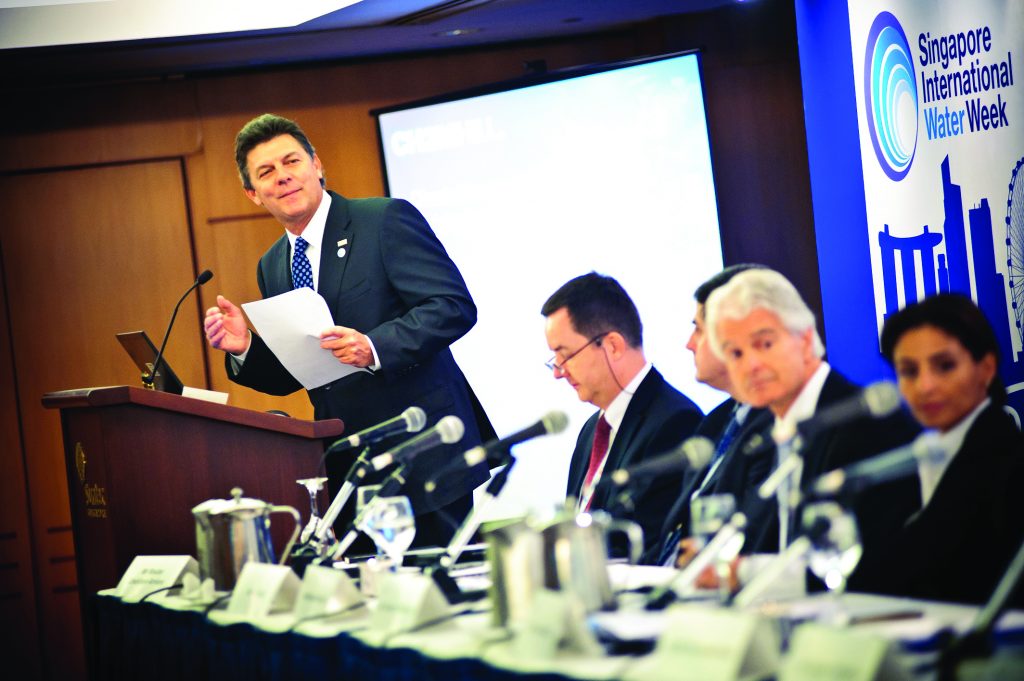
How is PUB getting its engineers ready to handle the challenges of the future?
PUB is an engineering organisation. We have over 3,000 staff and most of them are engineers. We always strive to hire good people, pay them decently and then offer them a challenging career and continuous personal development. In PUB we have a water academy, which is really our corporate university, through which we put every one of our engineers. It offers high-quality training and equips our engineers to innovate constantly. Because of Singapore’s water situation, we need our water engineers to be on their toes, always looking out for new and better ways of doing things.
Are non-domestic customers on course to meet their target of reducing monthly water consumption by 10 percent?
Commerce and industry are the big users of water in Singapore. We require the largest of them to submit annual water management plans to us so that we may have an overview of their water efficiency. In time, we will have to introduce stringent standards for non- domestic use and mandate recycling. Users who have the opportunity will have to be compelled to turn to seawater as an alternative.
The post Peter Joo Hee Ng, Chief Executive of PUB, Singapore’s national water agency appeared first on The Source.
]]>